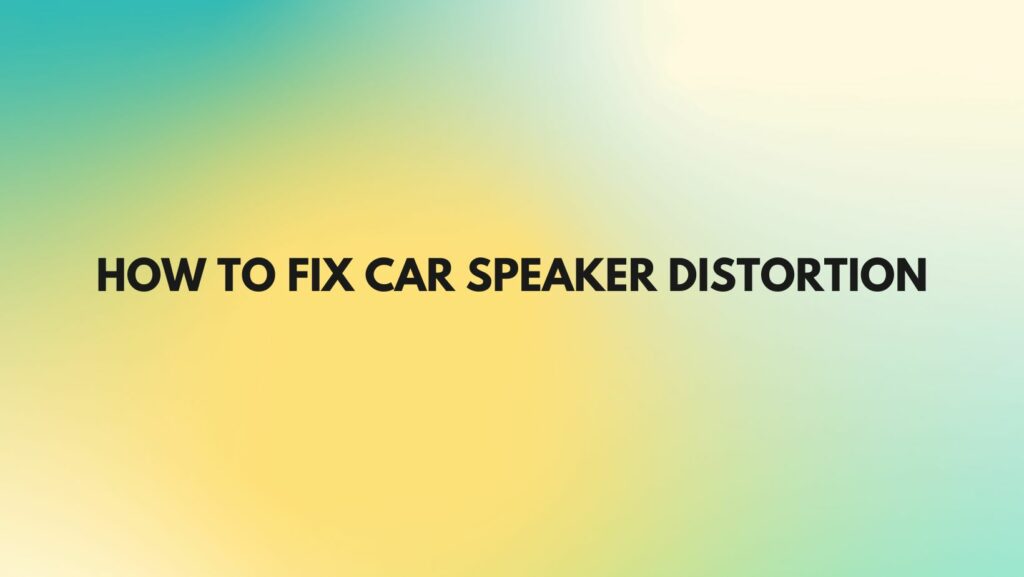Few things are more frustrating for music enthusiasts than experiencing speaker distortion in their car audio system. Distortion can significantly degrade the listening experience and even damage your speakers if left unchecked. Fortunately, there are effective ways to identify and address car speaker distortion issues. In this comprehensive article, we’ll explore common causes of distortion and provide step-by-step solutions to help you restore crystal-clear audio quality to your car.
I. Identifying Car Speaker Distortion
- Recognize the Signs Speaker distortion is often characterized by crackling, buzzing, or a generally distorted sound. If you notice any of these symptoms, it’s essential to diagnose the problem promptly.
- Isolate the Source Determine whether the distortion is originating from a specific speaker or if it affects the entire audio system. This can help pinpoint the root cause of the issue.
II. Common Causes of Car Speaker Distortion
- Overpowering Speakers Overloading your speakers with excessive power is a common cause of distortion. Ensure that you are not driving your speakers beyond their rated power handling capacity.
- Poor Quality Audio Source Low-quality audio files or streaming services with low bitrates can introduce distortion even before the audio reaches your speakers. Opt for higher-quality audio sources to improve sound quality.
- Amplifier Mismatch Mismatched amplifiers can send distorted signals to the speakers. Ensure that your amplifier’s specifications match the impedance and power handling capabilities of your speakers.
- Speaker Wear and Tear Over time, car speakers can deteriorate due to age and usage. Damaged or worn components, such as the cone or voice coil, can lead to distortion.
III. Solutions to Fix Car Speaker Distortion
- Adjust the Volume If you’re experiencing distortion, the simplest solution may be to lower the volume. Avoid pushing your speakers to their limits to prevent damage and distortion.
- Upgrade Your Audio Source Improve the quality of your audio source by using higher-bitrate audio files or streaming from reputable sources. Higher-quality source material reduces the risk of distortion.
- Match Amplifiers and Speakers Ensure that your amplifier is compatible with your speakers in terms of impedance and power handling. Consult your car’s manual or a professional installer for guidance.
- Set Amplifier Gain Properly Correctly adjusting the amplifier gain settings is crucial. Use a multimeter or consult an audio technician to set the gain at the appropriate level for your system.
- Replace or Repair Damaged Speakers If your speakers are old or damaged, consider upgrading to high-quality aftermarket speakers that can handle higher volumes without distortion. Alternatively, seek professional repair services to fix damaged speakers.
- Use Sound Deadening Sound deadening materials can be applied to car doors and interior surfaces to reduce vibrations and external noise, improving overall sound quality and minimizing distortion.
- Equalization Experiment with your car’s equalizer settings to fine-tune the audio and reduce distortion. Adjusting the balance of bass, midrange, and treble frequencies can help alleviate distortion issues.
Conclusion
Experiencing distortion in your car audio system can be frustrating, but it’s a common issue with practical solutions. By identifying the signs of distortion, understanding its common causes, and implementing the appropriate solutions, you can restore your car’s audio system to its full potential. Remember that responsible usage and maintenance of your audio equipment are key to enjoying distortion-free music while preserving the longevity of your speakers.


